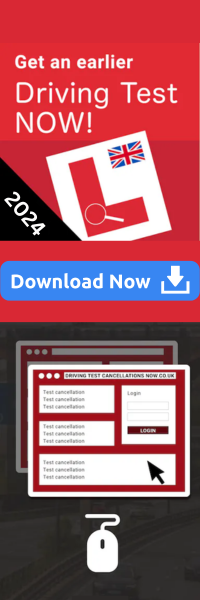Starting your driving journey is an exciting milestone, but driving test faults can present unexpected hurdles. These faults often make the difference between securing a pass or facing a fail on your test, especially after you’ve put in many dedicated hours of practice.
Unravelling the Common Driving Faults
In every corner of the United Kingdom, the Driver and Vehicle Standards Agency points out several driving test faults that are more prevalent than others. By understanding these faults, you can better equip yourself to face your test and the open road.
Junctions – Observation
Junctions can be a common stumbling block for learners like you. To swerve faults at junctions, you must demonstrate sharp observation skills, well-timed actions, and caution when emerging onto the road.

Mirrors – Change Direction
Failing to check mirrors when changing direction is a regular driving test fault. It’s easy to forget to check your mirrors before turning, changing lanes, or overtaking, especially when feeling complacent or under pressure.
Control – Steering
Controlling your steering is key. Your examiner will closely monitor your hand placement on the wheel and gear stick and how well you handle the steering during turns and maneuvers.
Junctions – Turning Right
Getting your positioning right during a right turn at junctions is crucial. Driving test faults can crop up due to complex road layouts, tricky markings, or straying over center lines unnecessarily.
Move Off – Safely and with Control
Moving off safely and with Control is essential to avoid driving test faults. You could face errors if you move off too swiftly, roll backward, or stall your engine.
Positioning – Normal Driving
Staying in the correct position during normal driving can be challenging, but preventing driving test faults is necessary.
By positioning your car incorrectly on the road, you pose a danger to other drivers. So, it is one common driving fault of many learner drivers.
Response to Signs – Road Markings
As a learner driver, you must prove that you can read and respond correctly to various road markings.
Reverse Park – Control
Your examiner will look out for smooth Control during parking maneuvers. To avoid driving test faults, you need to execute your maneuvers safely and at an appropriate speed.
Response to Signs – Traffic Signs
Understanding traffic signs is as crucial in your practical driving as in your theory test.

Use of Speed
You need to be comfortable and safe when adjusting your speed according to the driving conditions around you.
Response to Signs – Traffic Lights
Reacting correctly to traffic lights is a key aspect of driving. Errors here can lead to significant driving test faults.
Interestingly, many common driving test faults aren’t tied to specific maneuvers but rather to elements of ‘normal driving.’ Whether you’re preparing for your first test or have previously faced a failure, understanding these common driving test faults can help you sidestep them.
Laying Out the Risks you have as a Learner Driver
As you start your driving journey, the road to independence can also be peppered with potential driving test faults that can lead to serious consequences.
Unfortunately, accidents involving learners like yourself are all too common and can result in hefty costs from vehicle damage, property damage, and even personal injuries.
Even a momentary lapse in judgment, a simple driving test fault, can rapidly spiral into a nightmare scenario.
Imagine causing a multi-car accident – suddenly, you’re facing the daunting prospect of repairing or replacing multiple vehicles, confronting potentially high medical bills, and possibly even covering legal fees.
The Price Tag of Accidents
According to the National Highway Traffic Safety Administration, drivers like yourself, inexperienced and between 15-20 years old, account for nearly 20% of all car accidents.
The costs of these accidents can quickly escalate, with even minor incidents setting you back hundreds of pounds and major accidents costing thousands or even hundreds of thousands of pounds.
Accidents can also leave a psychological scar. The emotional trauma can be debilitating, potentially leading to a loss of confidence, feelings of guilt, or even a fear of driving.

Navigating Your Driving Learning Curve: Reducing Risks of Driving Test Faults
Insurance for learner drivers like you is more than a legal obligation – it’s a lifeline for accidents or driving test faults.
You can learn more about all kinds of UK car insurance to know which is best for you.
Specifically designed for the needs and risks of learners, learner driver insurance covers costs associated with accidents, such as vehicle repairs, medical expenses, and legal fees.
With learner driver insurance, the consequences of driving test faults become manageable rather than catastrophic.
Insurance providers understand that learner drivers are more likely to make mistakes, and they offer coverage that considers this. This coverage allows you to gain the experience and confidence you need on the road, safe in knowing you are protected.
So, as you kick start your driving journey, ensure it begins with the right protection – learner driver insurance.
It’s more than just an expense. It’s an investment in your peace of mind, financial stability, and future as a responsible driver.
Remember, taking responsibility for your future also includes ensuring the safety of others on the road. And that starts with understanding and avoiding common driving test faults.






0 Comments